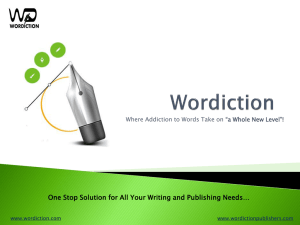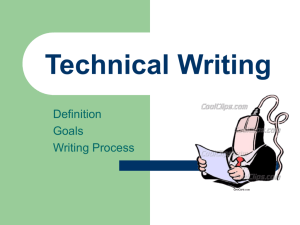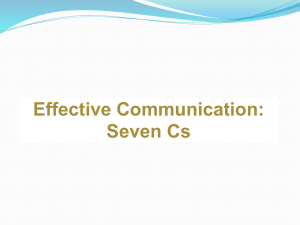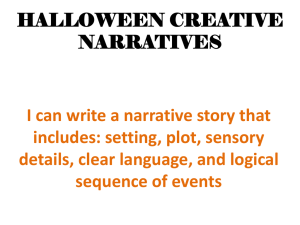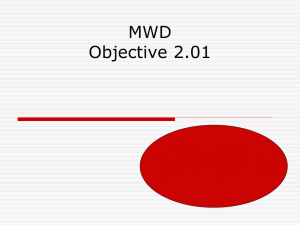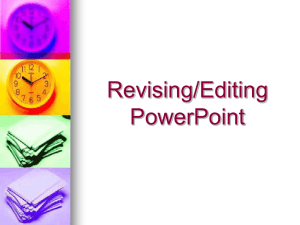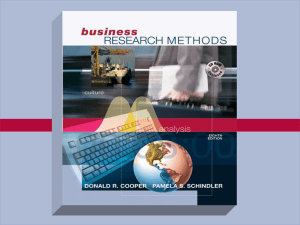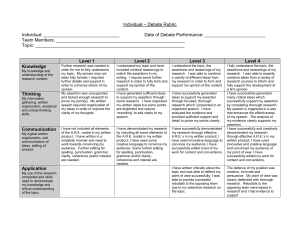editing, clarity, and conciseness
advertisement
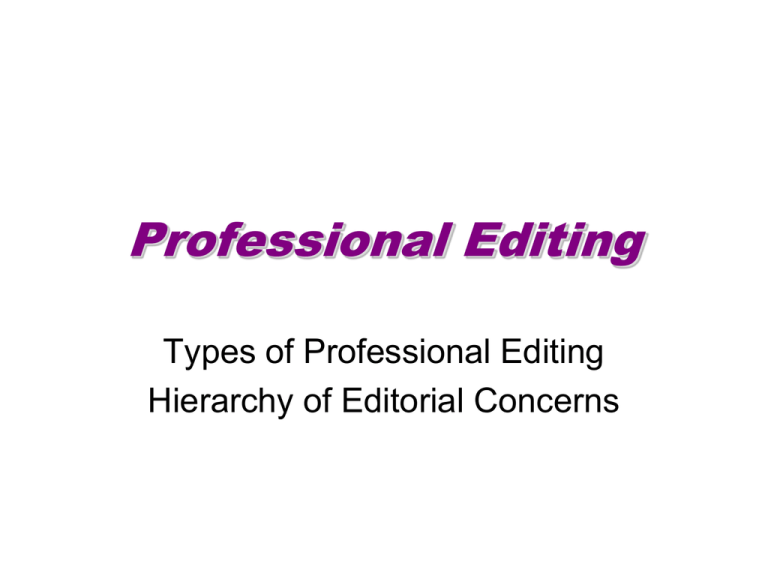
Professional Editing Types of Professional Editing Hierarchy of Editorial Concerns Developmental Editing Outside Editor Self-Editor (acquisitions editors) Consult with author, determine purpose, audience, “big picture”, genre; guides project from very early stage (the idea stage) up to draft Acquisitions editors Developmental editing at the planning stage, weighing options, altering the plan. May consult with others to “bounce ideas” Substantive Editing Outside Editor Content checked for accuracy, consistency, and completeness. Fact checked, source credibility checked Organization Content (add, remove, redesign, etc.) SMEs, external reviewers, referees, publication editors Self-Editor Done during drafting AND after draft is assembled. Content Facts/sources Organization Content Copyediting (proofreading) Outside Editor Self-Editor Some copyediting during drafting Word spelling/grammar check Several read-throughs, Print and read-through Manuscript preparation, Read aloud adherence to style Give to a friend Sentence level errors: grammatical, syntactical, stylistic, spelling(?), typos (?) guide (MLA, APA, etc.) High-Level Concerns (HLCs) purpose, audience Achievement of purpose (and sub-purposes) • Inclusion of (only) necessary information • Clarity of purpose • Placement of purpose High-Level Concerns (HLCs) purpose, audience Appeal to audience • Audience appeals for achieving purpose (motivate to act) • Ethically (ethos): purposeful, credible, ethical, professional • Emotionally (pathos): connect to audience’s values, interests, needs (even when it isn’t obvious to the audience) • Logically (logos): make good sense! Logical to audience, provide context, explanations, support • Maintain goodwill (not alienated, angry, or ignored), use of you-attitude, reader benefits, and positivity Mid-Level Concerns (MLCs) organization, chunking of information, overall usability • Organization that best achieves purpose and appeals to audience • Organization typical of genre/message type • Logical organization Mid-Level Concerns organization, overall usability (design) • Overall usability (design) • Chunking information • Genre appropriateness, adherence to conventions Easy to use – find information easily, graphic highlighting, lists, non-text elements for interest and usability, images for highlighting important information, adherence to the principles of good document design Low-Level Concerns generally sentence level Sentence Level: punctuation, grammar, spelling, typos, correct “style” Traditional Elements of Style = • Correctness: standard adherence to conventions • Clarity (and conciseness): simply stated, avoid business-ese, canned phrases • Appropriateness: of words & sentences for purpose, subject, reader, and context • Dignity: not sexist, culturally sensitive, generally sensitive, not stupid General Connections Higher-level concerns developmental editing Mid-level concerns substantive editing Lower-level concerns copyediting Lower-level editing common areas for improvement Clarity • Use words with a single meaning fixed fast repaired quickly or attached firmly? • Use words with neutral connotation (neutral to positive) Thin or scrawny? Self-confident or conceited? Relaxed or lazy? Inquisitive or nosy? Clarity • use plain language Avoid prolix nebulosity. • use caution with jargon and acronyms I talked about my pedagogical approaches to the instruction of university-level learners in computer-mediated classroom environments at the CEA. Clarity Use concrete language Avoid cliches not by a long shot left holding the bag run of the mill come full circle let the chips fall where they may Avoid generalizations when possible always, few, most, towards the left, a little Clarity Avoid unclear pronoun references The solutions were prepared in test tubes and later transferred. They were also sterilized. Our patients enjoy the warm days while they last. Avoid unclear modifiers Only press the red button in an emergency. Parallelism Generally, treat items the same way(?) Word Endings: Mary likes hiking, swimming, and to ride a bicycle. The production manager was asked to write his report quickly, accurately, and in a clear manner. At about noon the sky darkened, a breeze sprang up, and a low rumble announces the approaching storm. Parallelism Generally, treat items the same way(?) Descriptors (like in same order): – Tom’s purple book bag is ten inches wide, holds three books, and has a water bottle holder. – Jane’s red tote bag is twelve inches wide, holds four books, and has a pocket for a cell phone. (color – measure – capacity – extras) - Eric’s bag is really small and made of nylon. Also includes terms, units of measure, directions, & symbols Parallelism Generally, treat items the same way(?) Lists of Items Penalties for common violations include: – Jaywalking: death by paper cuts – Jail time: for traffic violations – If you are caught with open containers, you will be sent home – Speeding will result in a ticket Conciseness Fewer words & fewer syllables demonstrate endeavor is contingent upon subsequent to utilize the majority of in close proximity aware of the fact that = show = effort, try = depends = after = use = most = near = know Conciseness Eliminate redundancy collect together personal opinion completely eliminate contributing factor perfectly clear the month of January Avoid sentence openers There is a coaxial cable connecting the antenna to the receiver. There is a danger of explosion in second mineshaft. It was his bad attitude that got him fired. I am writing this letter because I wish to apply for the position. Conciseness “Nouning” = turning verbs into nouns We must conduct an investigation of all parking violations before we can give consideration to your fine. We must investigate all parking violations before we can consider your fine. conduct an investigation of provide a description of conduct a test of make a discovery of = investigate = describe = test = discover Conciseness Generally, use active voice (what is the exception to this?) Passive Voice – the subject is acted upon The girl was chased by the dog. Active Voice - the subject performs the action The dog chased the girl. Jack resents his assistant because he is competitive. Being so well known in the computer industry, I would appreciate your advice. Do not enter the test area while contaminated. Care should be taken with the dynamite. It is vital that you complete your homework. Your conclusion is in agreement with mine. Our acceptance of the offer is a necessity. My diagnosis was not inaccurate. I suggest you reduce the number of beverages you consume. We expect a refund of our full purchase expenditure. In the course of a normal semester, we complete four projects.


